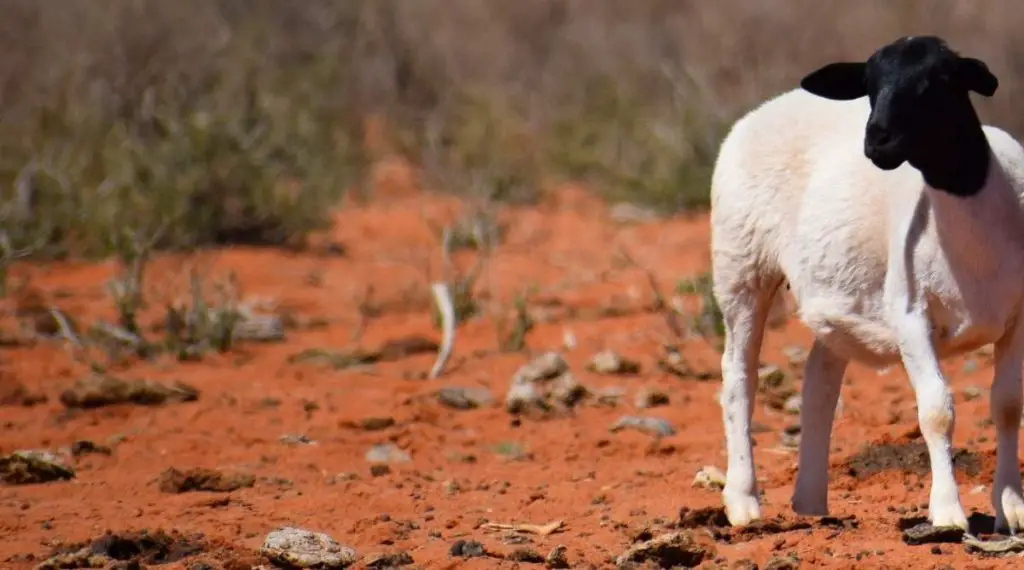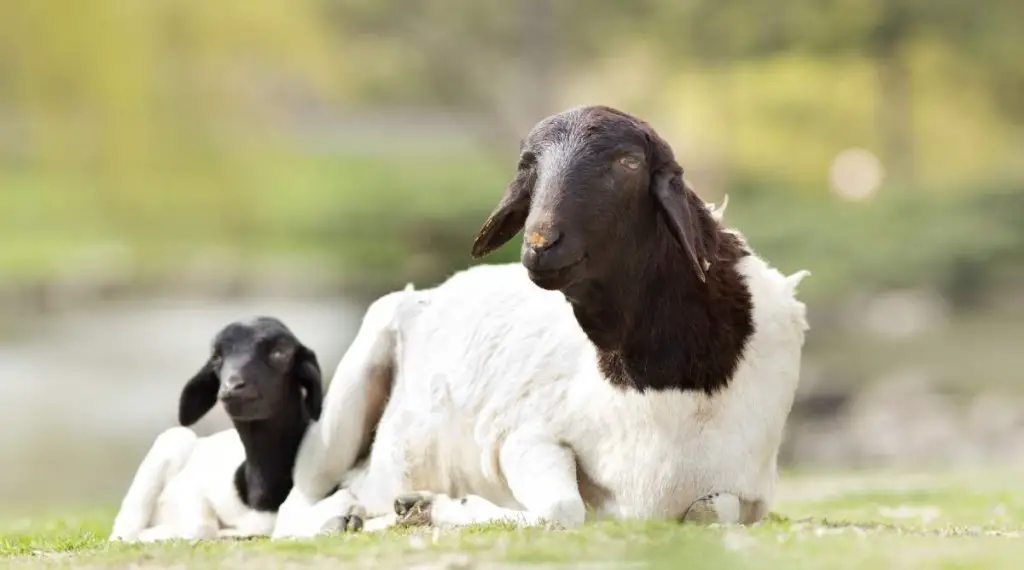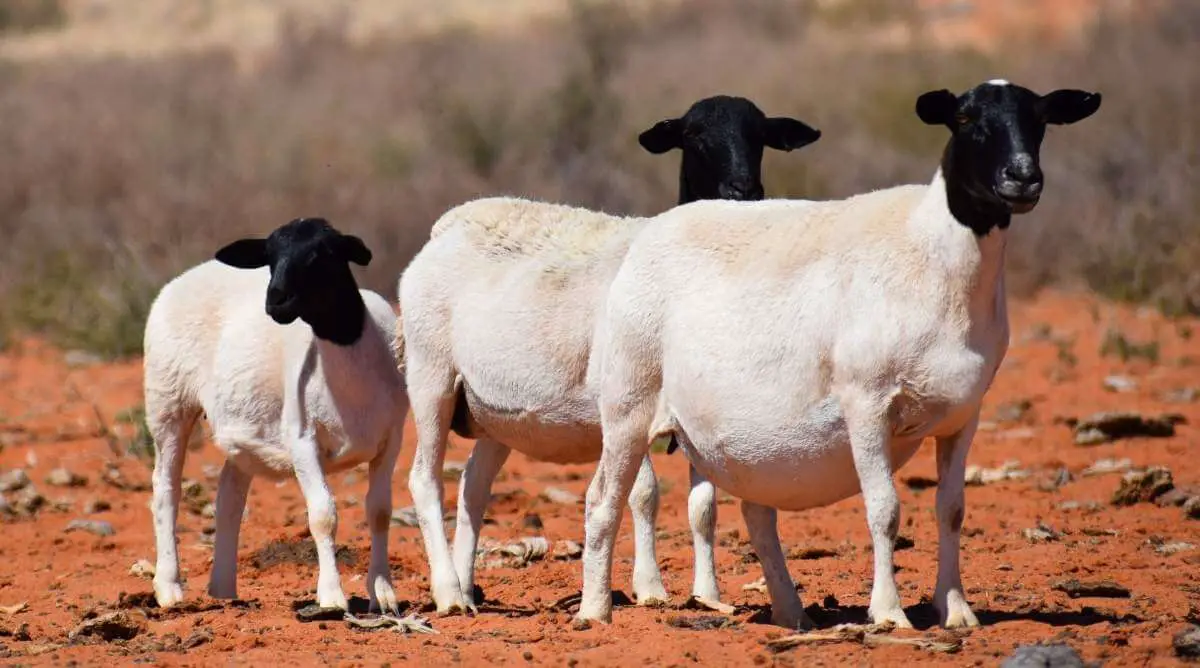The term 'black head sheep' often refers to Dorper sheep, which have a distinctive appearance with black heads and white bodies. It can also refer to the Blackhead Persian Sheep, as well as other breeds with black faces like Scottish Blackface Sheep, Hampshire Sheep, and Suffolk Sheep. This article will explore Dorper and Blackhead Persian Sheep, which have a closely linked history.
Table of Contents
Which breeds of sheep are black head sheep?
Dorper sheep and Blackhead Persian sheep are two common breeds of black head sheep. Both originated in Africa, and both are bred for meat production rather than wool.
Dorper Sheep

Dorper sheep originated in South Africa.
Development of the breed took place in the 1930s by crossing a Dorset ram and a Blackheaded Persian ewe.
Dorper sheep have a distinctive white body and a black head and face. Among South African breeds, the Dorper is the second largest.
The Dorper breed was developed for meat production rather than wool production.
Dorper Sheep Characteristics
| Characteristics | Description |
| Origin | South Africa |
| Appearance | Distinctive white body with a black head and face. |
| Wool | A hair breed. Not for wool production. |
| Fertility | They can lamb three times within two years. Extended fertility period. |
| Meat | Dorper sheep grow and gain weight rapidly. Lambs have been recorded to have gained up to 79 pounds with a carcass weight of between 37 and 39 pounds in just 100 days. |
| Environment | From hot desert conditions to cold snowy conditions. |
| Common uses | Meat production. |
Dorper lambs mature quickly. The ewes have strong mothering skills and instincts. The extended fertility period of the breed makes them the ideal choice of sheep during the breeding season. They can lamb three times within two years.
Dorper sheep are not bred for wool production. They produce a body covering that is a short mix of wool and hair. Dorper sheep do not require shearing. It sheds its hairy coat yearly.
Dorper sheep are hardy and are accustomed to surviving and thriving in even the harshest conditions and climates. They are known to have the ability to survive in the hot, desert conditions found all over the African continent, as well as the cold, snow-filled conditions experienced in both Tasmania, Australia and the United Kingdom.
Dorper sheep not fussy eaters and can survive on a variety of qualities of feed.
Dorper Sheep Meat Production
Dorper sheep are renowned for their high meat production rate.
Dorper rams reach maturity as early as five months of age. They grow and gain weight rapidly. Lambs have been recorded to have gained up to 79 pounds with a carcass weight of between 37 and 39 pounds in just 100 days. Carcasses with fat scores of between 2 and 3 have also been recorded.
Blackhead Persian Sheep

Blackhead Persian sheep have their beginnings in the arid regions of East Africa, in the area that is now Somalia. They are direct descendent of Somali breeds of sheep.
Blackhead Persian sheep were imported to South Africa in around 1870. In South Africa, the Blackhead Persian is often referred to by the Afrikaans nickname Swartkoppersie.
The Blackhead Persian sheep have also made their way into various parts of the Caribbean and the Americas, especially Brazil, where it is recognized as an official breed. The breed has adapted well to the humid climate of the tropics.
Characteristics of Blackhead Persian Sheep
| Characteristics | Description |
| Origin | Somalia |
| Appearance | White body with a black head and face and dangling ears. Short legs. |
| Wool | A hair breed. Not for wool production. |
| Weight | 150 pounds (Ram), 115 pounds (Ewe) |
| Meat | Blackhead Persian sheep have a vast quantity of fat stored at the base of the tail which is commonly used as cooking oil. |
| Environment | Tropical climate. Popular in the Caribbean and similar tropical regions. |
| Common uses | Meat production. |
The body of the Blackhead Persian sheep is white, and the head and face are black, with dangling ears. They have short legs and a compact shape and structure. They are generally small to medium-sized sheep.
Blackhead Persian sheep are a hair breed and aren’t bred for wool production. They do not need to be sheared each year as they naturally shed their hair.
The breed has adapted exceptionally well to tropical climates as the sheep have filtered into the Caribbean and other similar tropical regions.
Neither the rams nor ewes have horns.
Facts about Blackhead Persian Meat
Blackhead Persian sheep were initially bred for the vast quantity of fat stored at the base of the tail. This was viewed as a prized cooking oil.
A mature ram weighs in at around 150 pounds, while the ewes weigh around 115 pounds.

